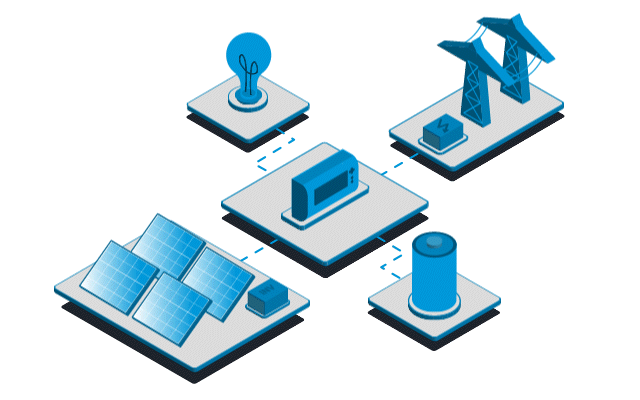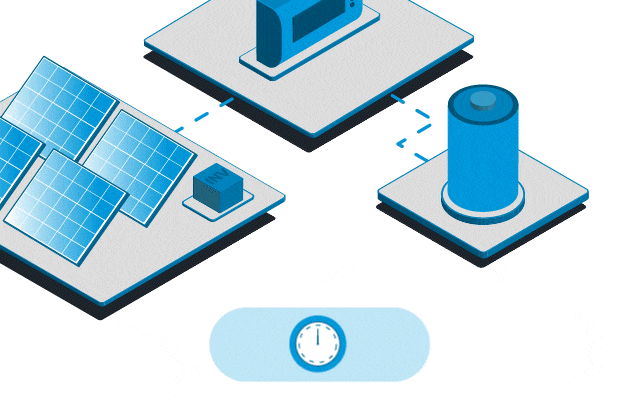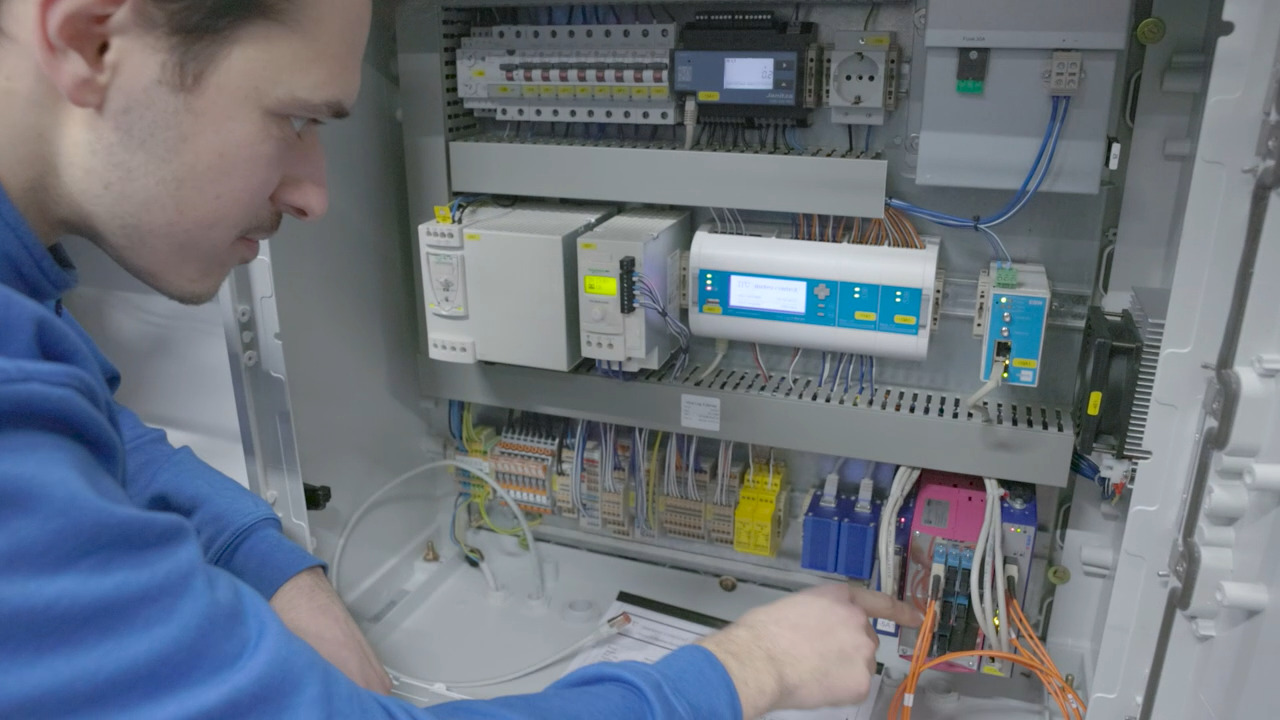meteocontrol develops hybrid energy management system
The integration of different energy sources and storage technologies into the power grid is one of the major challenges for the expansion of renewable energies. A key element for its successful implementation is hybrid energy management, which ensures the coordination and economic optimization of energy generation, storage and distribution. meteocontrol's new hybrid energy management system takes exactly this step and combines solar plants with battery storage systems to maximize and support economic efficiency and grid stability at the same time - but pure storage systems can also be controlled.

The energy management of PV systems with batteries optimizes the self-use of renewable electricity. It decides when to feed in or store temporarily. In addition, the hybrid energy management system could use the storage units for grid services. In this way, energy management not only contributes to grid stability, but also opens up new marketing opportunities.
The product is suitable for systems - PV and/or battery storage - from 100 kW up to the multi-megawatt range. It can also be used to cover local electricity requirements on this scale if the aim is to achieve as high a proportion of own electricity as possible.
Since February, we have been testing our new hybrid energy management system at the Rosenheim Technology Center for Energy and Buildings (roteg). As part of a project cooperation with Rosenheim Technical University, we can use a laboratory infrastructure that includes different combinations of inverters and storage systems. This allows us to test, optimize and validate the functions of the hybrid energy management system in diverse constellations. In the future, the system will be expanded to include the management of other components such as generator sets, wind turbines, charging stations and electrolysers.
Innovative functions for optimized self-consumption and grid integration
meteocontrol's latest hybrid energy management system offers a wealth of features to help plant operators and investors use renewable energy more efficiently and better integrate their projects into the power grid. In this article, we present the system's key features and explain how they help optimize self-consumption of solar power while reducing the load on the grid.
Band and Peak Shaving:
With this function, the energy management system ensures that no peak currents are drawn from or fed into the grid. This relieves the load on the power grid and enables plant operators and investors to conclude remuneration contracts for this service. By using the battery system or adding loads, the peak currents to be avoided are used on site.
Energy Trading:
Here, the energy management system can receive control signals from electricity marketers to perform arbitrage trades with price differences. For example, power can be provided when prices are high and excess power can be purchased from the grid when electricity prices are low or negative.
Operating reserves:
This function enables the storage system to provide primary control power at the grid connection point. In the event of deviations from a specified power threshold, the system supplies primary control power from a previously reserved amount of energy.

Energy Shifting:
To prevent curtailments where electricity may not be fed into the grid, the energy management system stores the excess electricity as soon as a threshold value is exceeded. The feed-in of the electricity is postponed to a later point in time, which can be controlled using thresholds or schedules.
Solar self-consumption:
The system maximizes solar self-consumption by either directing all solar power to self-consumption, temporarily storing it, or feeding it into the grid. This allows larger power demands to be met with solar power generated on-site.
Zero Feed-in:
This function technically implements feed-in bans or restrictions and feeds the solar power to own use - directly or after intermediate storage. During a curtailment, no solar power is fed into the grid, but is temporarily stored and then used for self-consumption.

The hybrid energy management system is based on the well-proven blue'Log. This means that existing plants that are already equipped with the energy control device from meteocontrol can be easily retrofitted with an update. In the future, meteocontrol's hybrid energy management system can also be connected to the proven VCOM monitoring portal.
With these innovative features, meteocontrol's hybrid energy management system offers significant benefits to both new and existing customers. The ability to upgrade proven technology such as the blue'Log makes it particularly attractive for existing customers, as they can benefit from the latest features without having to invest in completely new hardware.
Overall, the hybrid energy management system helps to further drive the expansion of renewable energies by optimizing self-consumption while relieving the burden on the power grid. The tight integration of solar and storage systems makes it easier for operators of renewable energy projects to operate their plants efficiently and economically while contributing to the energy transition.
Intersolar highlight: exclusive insights into meteocontrol's hybrid energy management system.
In simulations, the hybrid energy management system already works. Now we are validating the control algorithms. The functionalities required for the business cases must run flawlessly.

After the laboratory tests at the Technical University of Rosenheim, the system is installed and tested at a customer's reference plant. This should result in the "proof of concept", i.e. that the entire functionality has been demonstrated. During these test phases, final errors are eliminated, and the product is continuously improved. At "the smarter E Europe" trade fair, the umbrella trade fair for Intersolar, ees, Power2Drive and EM-Power, we will present the finished product in Munich in mid-June - that is the schedule.
After that, the certification processes have to be completed country by country. We are starting with the DACH region. Our customers in Germany, Austria and Switzerland will be the first to be able to use the hybrid energy management system.
The energy future is hybrid
The breathtaking successes in the global expansion of renewable energies are increasing the technical challenges. The more renewable the energy system becomes, the more flexibly it must be able to respond to weather conditions and grid situations. More and more different components must work together in hybrid fashion, as in a clockwork, in order to implement both security of supply and a drastic reduction in climate-heating exhaust gases.
Operators of PV and battery storage systems can also contribute to security of supply and thus earn money. The immediate on-site use of electricity relieves the load on the grid, and grid-oriented feed-in behavior stabilizes it. Intelligently deployed battery systems are an important key to this.
The energy market is changing rapidly. Within just a few months, many companies have had to realize how advantageous the price stability that renewable self-supply can provide can be. And megatrends such as electric mobility and the hydrogen economy must also be considered and implemented. That's why meteocontrol places a strong emphasis on expandability to other components in its hybrid energy management system.
Dr. Stijn Stevens, CTO and Managing Director at meteocontrol, emphasizes the importance of continuous adaptability in a constantly changing market:
"Requirements are constantly expanding and may be obsolete in a year's time. Therefore, in order to remain successful, we need to continuously evolve and stay on the cutting edge of technology. This applies both to our product and to our entire industry."

Kilian Rüfer
The author Kilian Rüfer is an energy blogger and writes about the energy transition, sustainable finance and climate communication.